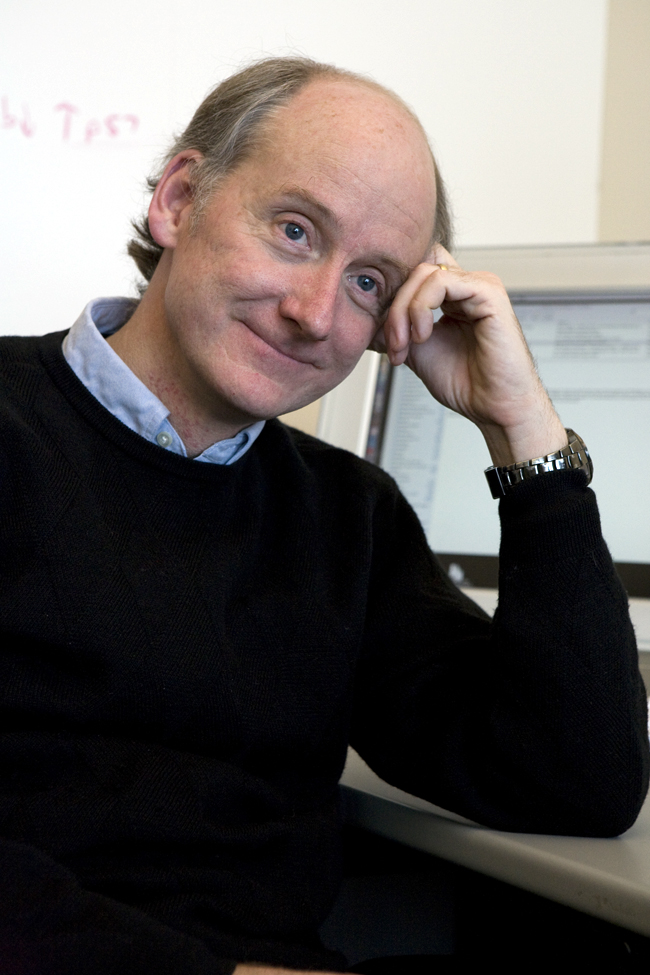
New Gene Repair Technique Promises Advances in Regenerative Medicine
Using human pluripotent stem cells and DNA-cutting protein from meningitis bacteria, researchers from UC Santa Barbara, the Morgridge Institute for Research at the University of Wisconsin–Madison and Northwestern University have created an efficient way to target and repair defective genes.
Published today in the Proceedings of the National Academy of Sciences, the team's findings demonstrate that the novel technique is much simpler than previous methods and establishes the groundwork for major advances in regenerative medicine, drug screening and biomedical research.
Principal investigator James A. Thomson, co-director of biology at UCSB's Center for Stem Cell Biology and Engineering and professor in the campus's Department of Molecular, Cellular and Developmental Biology, said the discovery holds many practical applications, including paving a new route for correcting genetic disorders. Thomson is also director of regenerative biology at the Morgridge Institute, serves as the James Kress Professor of Embryonic Stem Cell Biology at the University of Wisconsin–Madison and is a John D. MacArthur professor at UW–Madison's School of Medicine and Public Health.
According to the paper's lead author, Zhonggang Hou of the Morgridge Institute's regenerative biology team, the technique has the potential to repair any genetic defect, including those responsible for some forms of breast cancer, Parkinson's and other diseases. "The fact that it can be applied to human pluripotent stem cells opens the door for meaningful therapeutic applications," said Hou.
The research team focused on Neisseria meningitidis bacteria because it is a good source of the Cas9 protein needed for precisely cleaving damaged sections of DNA. Using different types of small RNA molecules, the research team was able to guide this protein, engendering the careful removal, replacement or correction of problem genes. "This represents a step forward from other recent technologies built upon proteins, such as zinc finger nucleases and transcription activator-like effector nucleases," said Yan Zhang of Northwestern University, second author of the paper.
These previous gene correction methods required engineered proteins to help with the cutting. The researchers said scientists can synthesize RNA for the new process in as little as one to three days, compared with the weeks or months needed to engineer suitable proteins.
"Human pluripotent stem cells can proliferate indefinitely and they give rise to virtually all human cell types, making them invaluable for regenerative medicine, drug screening and biomedical research," Thomson said. "This collaboration has taken us further toward realizing the full potential of these cells because we can now manipulate their genomes in a precise, efficient manner."
Erik Sontheimer, another principal investigator and the Soretta and Henry Shapiro Research Professor of Molecular Biology in Northwestern's department of molecular biosciences, Center for Genetic Medicine, and the Robert H. Lurie Comprehensive Cancer Center of Northwestern University, said the team's results also offer hopeful signs about the safety of the technique.
"A major concern with previous methods involved inadvertent or off-target cleaving, raising issues about the potential impact in regenerative medicine applications," said Sontheimer. "Beyond overcoming the safety obstacles, the system's ease of use will make what was once considered a difficult project into a routine laboratory technique, catalyzing future research."
Also contributing to the study, which was supported by funding from the National Institutes of Health, the Wynn Foundation, and the Morgridge Institute for Research, were Nicholas Propson, Sara Howden and Li-Fang Chu from the Morgridge Institute for Research.
Related Links
Center for Stem Cell Biology and Engineering
Department of Molecular, Cellular, and Developmental Biology



